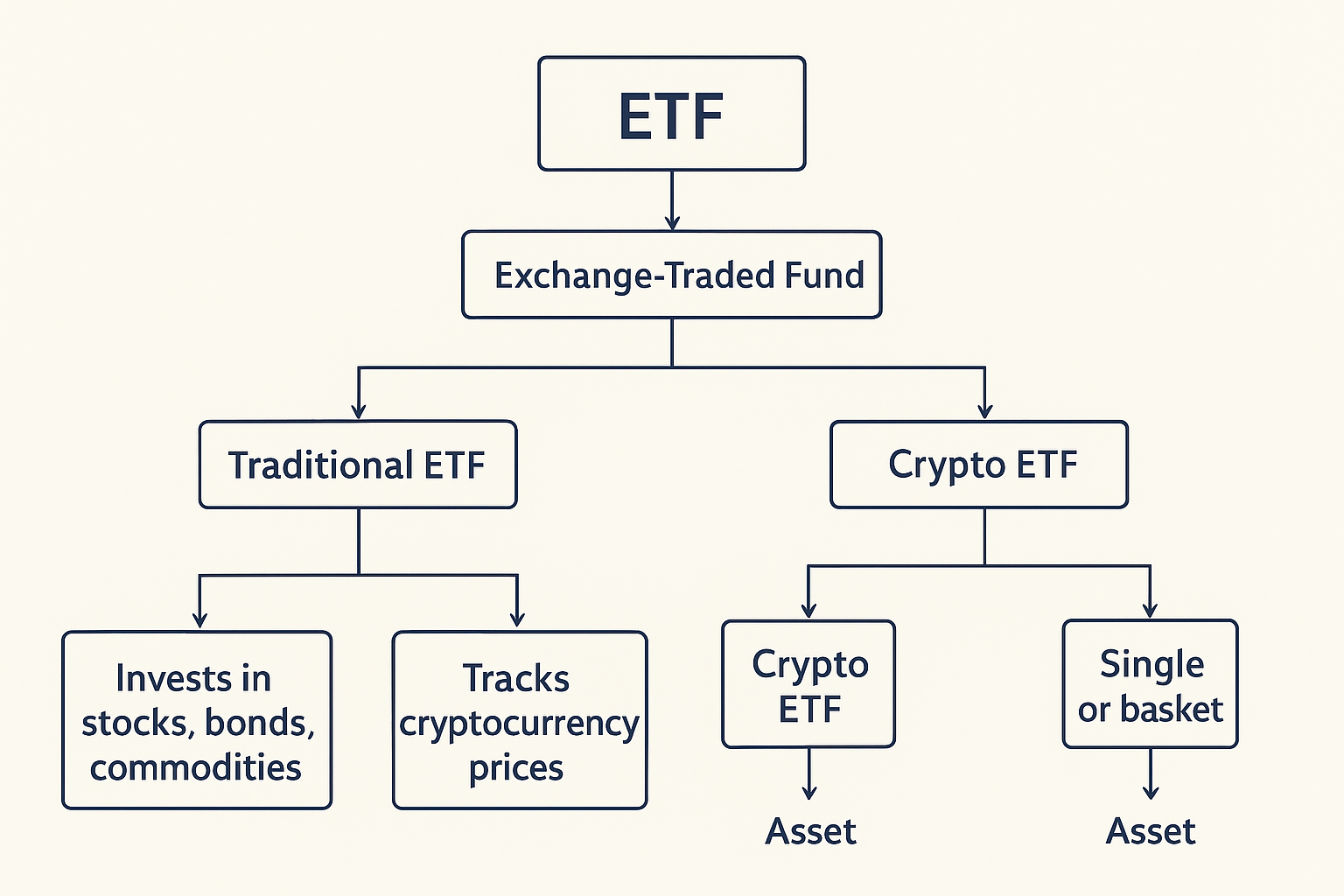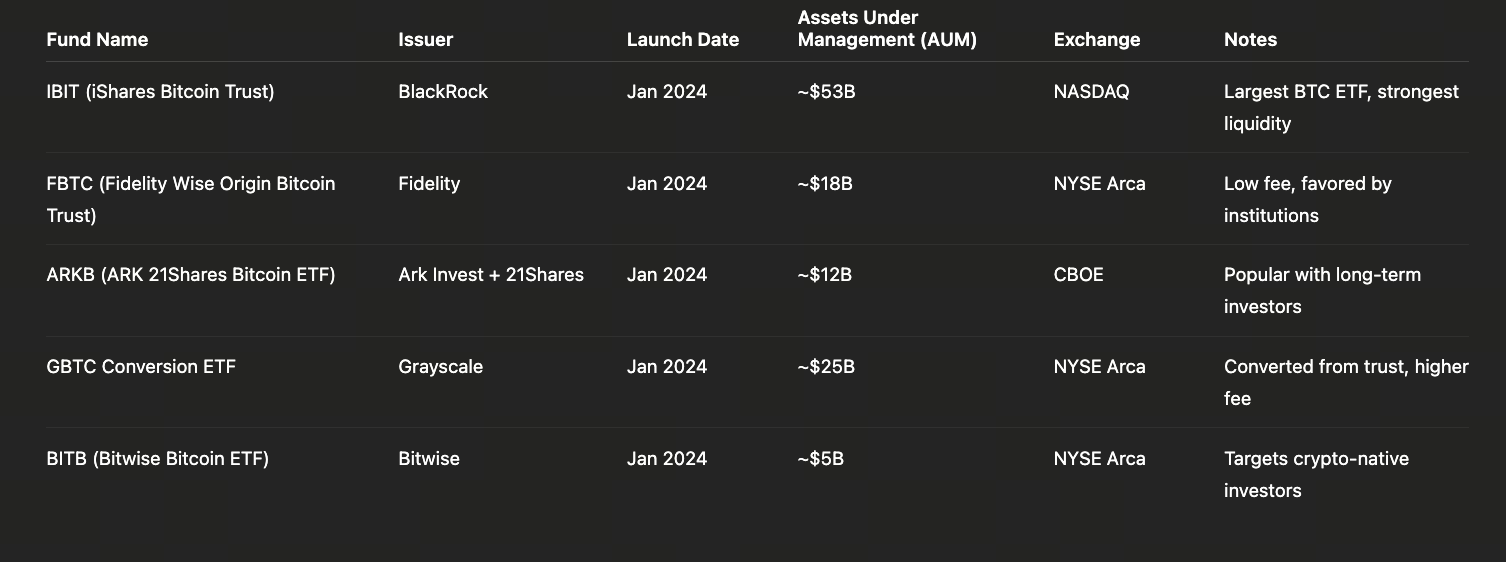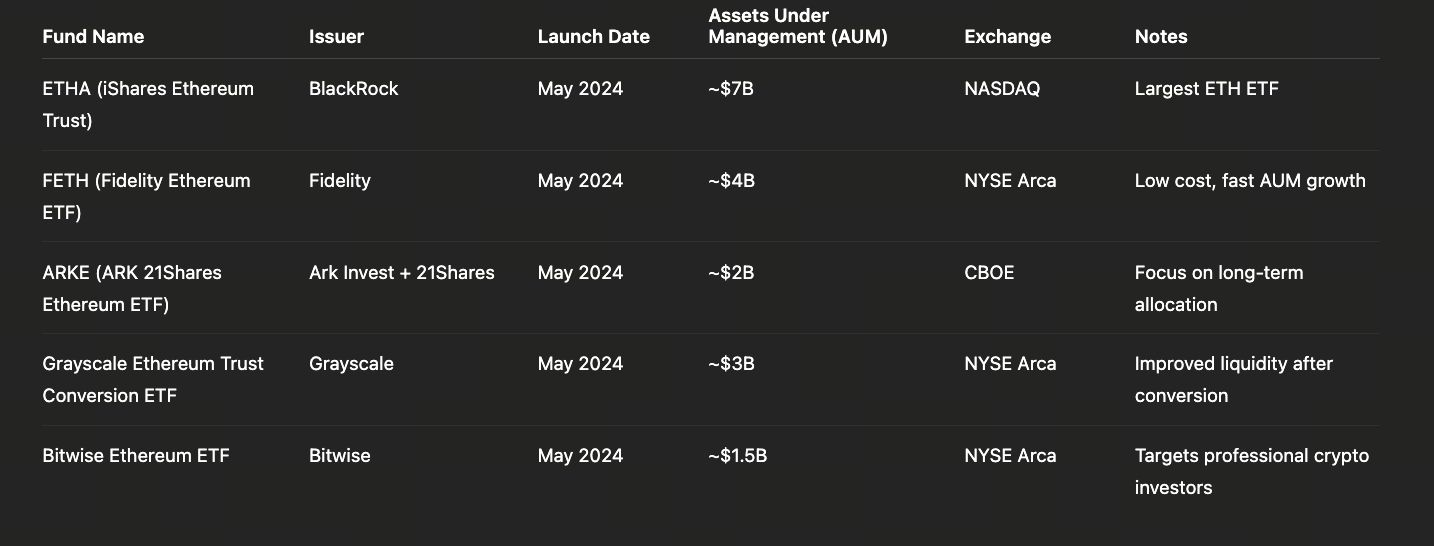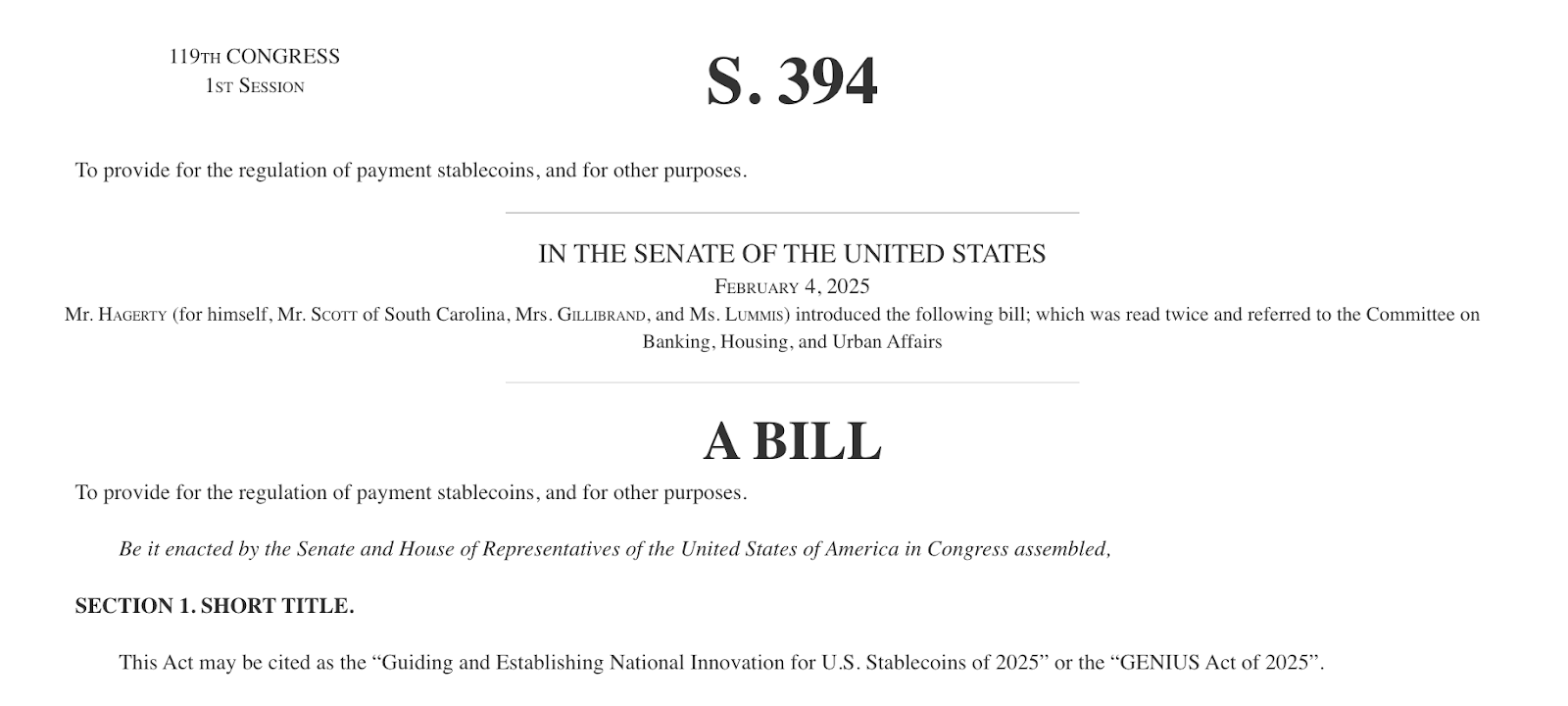The Expansion Wave of Crypto ETFs: From BTC to MemeCoin
Introduction
Since the U.S. approval of Bitcoin and Ethereum spot ETFs in 2024, the crypto ETF market has experienced explosive growth. The global crypto ETF assets under management have surpassed $100 billion, nearly a tenfold increase from the beginning of the year. As an innovative financial tool, crypto ETFs provide investors with a convenient, low-cost, and relatively safe way to participate in the cryptocurrency market without directly holding cryptocurrencies, effectively lowering investment barriers and technical difficulties. Consequently, Crypto ETFs are becoming an important bridge connecting traditional finance and the crypto market, attracting significant attention from both institutions and retail investors.
The Basic Logic of ETFs

ETF Logic Architecture Diagram (Created by Gate Learn Creator Max)
Exchange-Traded Funds (ETFs) are open-ended index funds publicly traded on exchanges. Crypto ETFs are essentially index funds tracking the price performance of crypto assets, similar to traditional ETFs but with cryptocurrencies as the underlying assets. Investors can buy and sell ETF shares through securities accounts without managing wallets or private keys. Compared to traditional direct coin holding, ETFs are managed and custodied by professional custodians, reducing security and operational difficulties.
Compared to traditional ETFs, crypto ETFs have a single underlying asset, investing only in one or a basket of cryptocurrencies (such as Bitcoin ETFs, Ethereum ETFs, etc.), while traditional ETFs typically hold various assets like stocks, bonds, and commodities. In terms of regulation, traditional ETFs have a mature regulatory system and strict disclosure requirements; in contrast, the regulatory framework for crypto ETFs is still being explored, with significant policy differences across markets. In terms of trading mechanisms, crypto ETFs can accommodate both exchange trading and 24/7 trading features, providing investors with more flexible buying and selling opportunities.
The Launch of BTC and ETH ETFs

BTC ETF Fund Flow Statistics (Source: https://farside.co.uk/btc/)
2024 became a turning point in the development of crypto ETFs: In January, the U.S. SEC approved the listing of the first 11 Bitcoin spot ETFs, marking Bitcoin’s official recognition by the traditional financial market. Investors could participate in the Bitcoin market through securities accounts without directly holding BTC, significantly lowering the investment threshold. Shortly after, in May of the same year, the U.S. SEC approved Ethereum spot ETFs on multiple platforms, enriching the variety of ETF products and improving the crypto investment ecosystem.
After ETF approval, a large amount of capital flowed into the crypto market. According to statistics, BlackRock’s Bitcoin ETF attracted over $15 billion in net inflows in the first two months after its launch. By July 2024, Bitcoin spot ETFs in the U.S. market held a total of $50 billion worth of BTC, with an average daily trading volume of $100 million. Ethereum ETFs accumulated about $13.6 billion in inflows in about a year since their launch, while Bitcoin ETFs accumulated about $54 billion during the same period. The capital inflow drove price increases: data shows that within a month after the approval of Bitcoin spot ETFs, the coin price rose from $40,000 to $52,000 (an increase of over 30%). For Ethereum, market enthusiasm was equally high after approval, with some analysts predicting ETH prices could surge to $6,000 after ETF listing.
These data indicate that the launch of BTC and ETH spot ETFs not only provided investors with convenient compliant channels but also effectively promoted capital inflow and market price appreciation.
Overview of Notable BTC and ETH ETFs
In recent years, with the successive approvals of Bitcoin and Ethereum spot ETFs, a group of large-scale, highly liquid leading products has gradually formed in the market.

Overview of Notable BTC ETFs (Source: Gate Learn Creator Max)

Overview of Notable ETH ETFs (Source: Gate Learn Creator Max)
Traditional financial giants such as BlackRock, Fidelity, and Ark Invest have entered the market, driving the rapid development of BTC and ETH ETFs. Overall, BTC ETFs are larger in scale and faster in capital inflow, cementing Bitcoin’s status as “digital gold”; while ETH ETFs, as emerging compliant products, although starting later, are growing rapidly and gradually being viewed by institutions as an allocation target for “digital technology assets.”
The emergence of these two types of ETFs has not only broadened the entry channels for traditional investors but also promoted the institutionalization and compliance of the crypto asset market structure. In the future, as more altcoin ETF applications are submitted, the market ecosystem may see further diversification.
Expansion to Altcoin Assets like SOL and XRP
With the success of BTC and ETH ETFs, many institutions have turned their attention to high market cap altcoins. Taking Solana (SOL) as an example, multiple institutions have already submitted applications for SOL spot ETFs. For XRP, as of the first half of 2025, multiple institutions have submitted XRP spot ETF filings. LTC (Litecoin) has also become a popular target: two institutions submitted LTC spot ETF applications in early this year, which have been accepted by the SEC and entered the public comment phase. Market analysts predict that LTC could become the next approved altcoin ETF.
Moreover, more assets have joined the application queue: Trump tokens, “Bonk” and other meme coins, as well as spot ETF applications for Dogecoin (DOGE), Polkadot (DOT), and others have been submitted successively. Market predictions suggest that if approved, SOL and XRP spot ETFs could attract billions of dollars in capital inflows, indicating strong market interest in these altcoin assets.
In terms of market reaction, news of new ETFs often triggers price fluctuations in related coins. For example, after the announcement of Solana-related ETF applications, the SOL price rose temporarily, reflecting market expectations for compliant investment channels. Overall, SOL, XRP, and other altcoins have become popular targets for ETF diversification due to their high market capitalization and liquidity.
The Potential for MemeCoin ETFs
As institutional and retail investors’ interest in crypto ETFs increases, whether “meme coins” like Dogecoin (DOGE) and Shiba Inu (SHIB) can enter the ETF landscape has become a hot topic. In the first half of 2025, there were at least 30 altcoin spot ETF applications, with XRP and DOGE appearing most frequently. Due to its popularity and historical position, DOGE has already received multiple ETF applications, including plans from several institutions to launch DOGE ETFs or convert existing trusts into ETFs. The launch of DOGE ETFs is considered a potential pilot for “meme coin ETFs.”
In contrast, there have been no ETF applications for other meme coins like SHIB. Analysts believe that SHIB’s ecosystem is more dispersed, with an anonymous core team and lack of major backers, leading to no companies submitting SHIB ETF plans for now. Some research institutions predict that actively managed crypto ETFs will appear by the end of 2025, while ETFs focused on meme coins may not emerge until 2026.
However, meme coin ETFs also face controversy and risks. Some analysts emphasize that ETF listing does not necessarily lead to price surges. A year after Ethereum ETFs were approved, its price did not see an explosive increase comparable to Bitcoin. Meme coins themselves are highly volatile and speculative; if ETFs are launched, regulators and investors will still maintain high scrutiny on their compliance and value basis. Therefore, although meme coin ETFs are gradually becoming a trend, there is still uncertainty about their launch time and regulatory outcomes.
Global Regulatory Trends Support ETF Diversification

GENIUS Act: https://www.congress.gov/bill/119th-congress/senate-bill/394/text
Regulatory attitudes in various countries are evolving positively to support the diversification of ETF products. In the United States, the new SEC Chair appointed in 2025 immediately reversed the previous stringent regulatory approach towards crypto. The SEC announced the withdrawal of several previously proposed regulatory measures and promoted friendly policies such as “innovation exemptions.” Additionally, the U.S. Congress passed the GENIUS Act (Generating Economic Neutrality in Innovative United States Stablecoin Act), establishing a federal regulatory framework for USD-denominated payment stablecoins. These initiatives reflect positive signals from U.S. regulators to provide legal certainty for the digital asset market.
In Europe, the MiCA regulation, effective since June 2024, provides unified regulatory standards for crypto assets, especially setting clear requirements for stablecoins, contributing to the sound development of the EU market. Asian markets are also accelerating their compliance processes: Hong Kong has introduced a regulatory regime for virtual asset businesses and listed several virtual asset spot ETFs; Singapore now requires all crypto service providers to obtain licenses for operation. Overall, global regulations are building a more inclusive and clear system, paving the way for crypto ETF products while requiring product and service providers to meet higher compliance standards.
Impact on Crypto Market Structure
The expansion of Crypto ETFs is reshaping market capital structure and pricing logic. Firstly, ETFs have introduced a large amount of institutional capital and traditional investors, diversifying the composition of crypto market participants. Bitcoin’s market dominance has decreased from about 65% at the beginning of the year to about 59%, indicating significant capital allocation to altcoins and emerging projects. The market share of meme coins like Dogecoin and Shiba Inu has increased notably, showing capital flow to these assets.
Secondly, ETF pricing logic is closer to traditional financial markets: fund share prices track the value of underlying assets, but the buying and selling mechanisms are similar to stocks, enhancing market liquidity and transparency. The concentration of assets in leading ETF products also brings concentration risks. For example, BlackRock’s Bitcoin ETF quickly expanded after listing, with assets under management exceeding $50 billion, potentially causing a concentration effect on the crypto market due to its significant influence. Additionally, ETF funds typically follow macro and market sentiment fluctuations, which may strengthen the correlation between crypto assets and traditional assets like stocks.
Lastly, from a user structure perspective, ETFs have lowered the technical barriers to crypto investment, enabling more traditional investors to participate. Institutional investors can allocate crypto assets through brokerage accounts, while retail investors can purchase ETFs through retirement accounts or advisory platforms, significantly increasing market participation. While this change helps market maturation, it may also lead to excessive speculation in certain assets. Overall, the development of crypto ETFs is accelerating the integration of the market with traditional finance, reshaping the market ecosystem of capital flows and asset pricing.
Risks and Challenges
The expansion of Crypto ETFs also comes with various risks and challenges. Regulatory risks still exist: although U.S. regulatory attitudes have shifted, policies in other markets are not unified, and any tightening of regulatory policies could immediately affect ETF issuance and trading. Centralization risk is also noteworthy: currently, ETFs are still dominated by a few large financial institutions, with leading products accounting for the vast majority of market share. If custodial institutions or fund management encounter problems, it could trigger systemic risks. Bubbles and speculation are also concerns that cannot be ignored: ETFs facilitate speculative capital entering the crypto market, potentially inflating some asset prices beyond fundamentals. In this situation, the high volatility of the crypto market could be further amplified, and investors need to be vigilant about potential bubble risks.
Future Outlook
Looking ahead, crypto ETF varieties will become more diverse. Index ETFs and multi-asset portfolio ETFs will gradually emerge to cover more mainstream altcoins or customized themes. For example, index ETFs tracking total crypto market capitalization or industry distribution might be launched; stablecoin funds could also become a new trend. Actively managed ETFs are also highly anticipated, with the first batch of active crypto ETFs expected to appear by the end of 2025, possibly including some products tracking hot themes. Moreover, innovative products combining ETFs and stablecoins are in the works, such as potentially using stablecoins as ETF settlement means or investment targets, providing investors with new investment tools that offer both “compliance + yield”. As technology develops and regulations become clearer, Crypto ETFs are expected to expand from single categories to fund platforms covering a wider range of assets.
Conclusion
Overall, crypto ETFs bring a dual opportunity of “compliance + capital inflow” to the market, broadening the channels for investors to enter the crypto market. They are not a panacea and will not automatically eliminate the risks of crypto assets, but they do have strategic significance in the current cycle. The expansion of ETFs should be based on sound investment logic and regulatory compliance. For investors, while enjoying the convenience and broad opportunities brought by ETFs, it’s still necessary to remain cautious and grasp the potential systemic risks and speculative bubbles they may bring. In general, crypto ETFs clearly act as a bridge, but their long-term impact needs further examination and verification in practice.
Related Articles

Gate Research: 2024 Cryptocurrency Market Review and 2025 Trend Forecast

Detailed Analysis of the FIT21 "Financial Innovation and Technology for the 21st Century Act"

Altseason 2025: Narrative Rotation and Capital Restructuring in an Atypical Bull Market

Gate Research: Web3 Industry Funding Report - November 2024

A Comprehensive Guide To Hybrid Token In 2024
